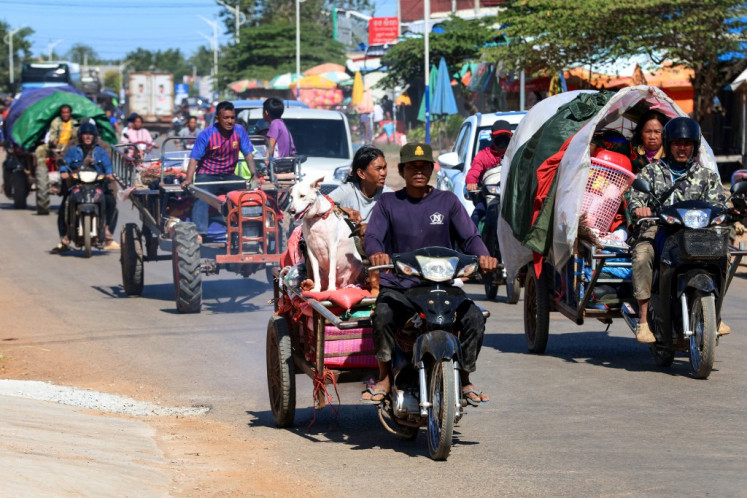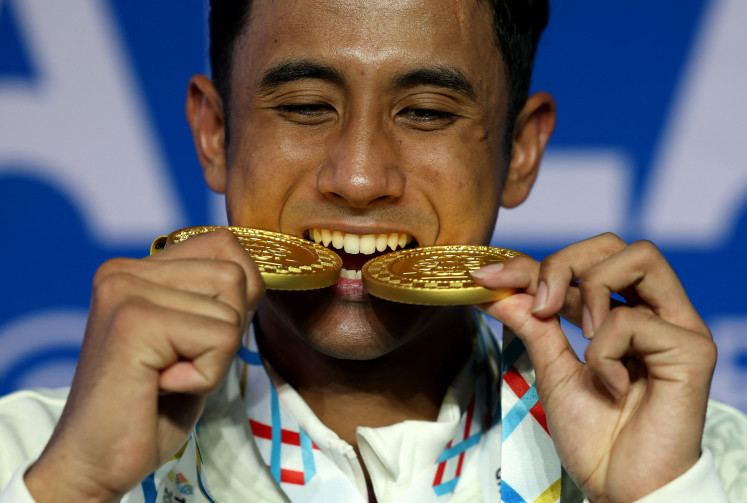Popular Reads
Top Results
Can't find what you're looking for?
View all search resultsPopular Reads
Top Results
Can't find what you're looking for?
View all search resultsSojourn: A real diving holiday - “Underwater macro photography in Ambon”
Located on one of the easternmost islands in Indonesia, Ambon is a world-famous name among underwater macro photographers, but less so among mainstream divers and, unfortunately, even less among Indonesians other than those who love to travel
Change text size
Gift Premium Articles
to Anyone
Located on one of the easternmost islands in Indonesia, Ambon is a world-famous name among underwater macro photographers, but less so among mainstream divers and, unfortunately, even less among Indonesians other than those who love to travel.
Situated in the very heart of the Coral Triangle, Ambon, the capital city of Maluku, together with North Maluku province, are geographically the closest neighbors to the world-renowned dive site Raja Ampat in Papua.
The recent emergence of popular spots on the islands, including Ora Beach, serves as a pleasant reminder of how beautiful this part of Indonesia is.
The main diving sites in Ambon, where most of the dive operators are, are a very comfortable 10-15 minutes’ drive from the airport. On my two visits there, I chose to stay first at the main Ambon bay and then around 40 minutes away to get closer to other great dive sites.
In both places, underwater photographers have the real luxury of accessing a secure camera room with special facilities, including high pressure air nozzles to help dry camera rigs, as well as camera bags that staff will take back and forth to the dive.
On each dive, it is immediately noticeable that, as with other great small critter (macro) dive sites in the continent, most of the Ambon bay sites have black or dark sandy bottoms, which sets quite high expectations as to what critters might be encountered.
Nobody had to wait long as, within the first minutes of the first dive, two rare rhinopias, famously dubbed the “gem of Southeast Asian diving”, were sighted sitting close to each other.
Within three diving days, apart from the all-impressive Weedy and Paddle Flap Rhinopiases, the dives were graced with the presence of almost all rare critters an underwater photographer could dream of, such as Harlequin shrimps, countless Bumblebee shrimps (yes, countless), Imperator Shrimps hitching a ride, coconut octopuses, flamboyant cuttlefish and nudibranchs in all colors and sizes, including Pikachu nudibranchs.
Besides these encounters, the abundance of other specific critters reminded everyone of the richness of Ambon’s waters. Frogfish of different types were encountered on almost every dive, such as Painted, Warty, Clown and Hairy Frogfish.
Underwater photographers can really have a field day in Ambon; the topography of most sites is gentle slopes with little or close to no current, and they are typically less than 10 meters deep.
The whole experience was a fuss-free indulgent diving holiday during which almost all of the non-relaxing diving routine was taken away from divers, making it relaxing not only mentally but also physically. The first class services offered by the dive operators made the trip a real holiday.










